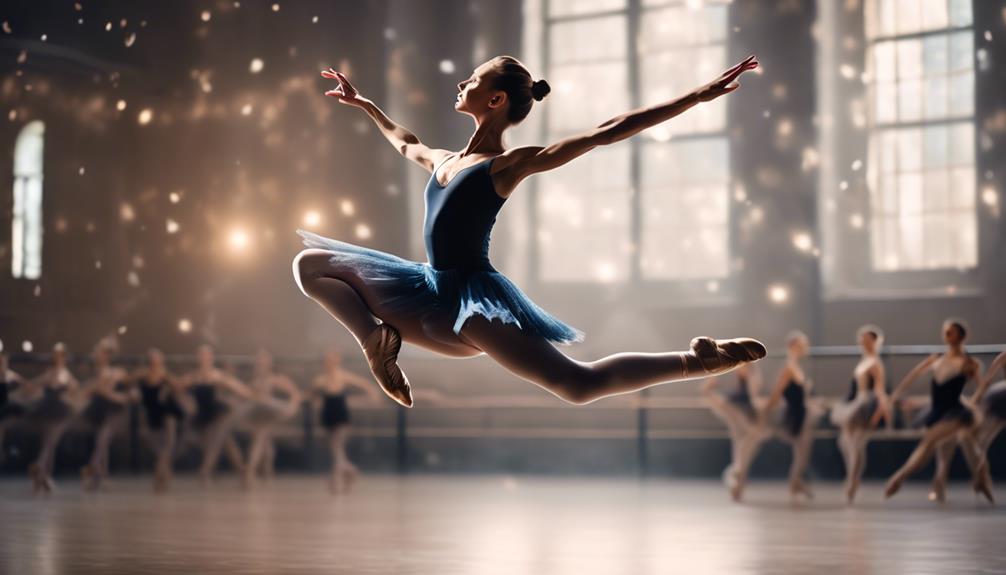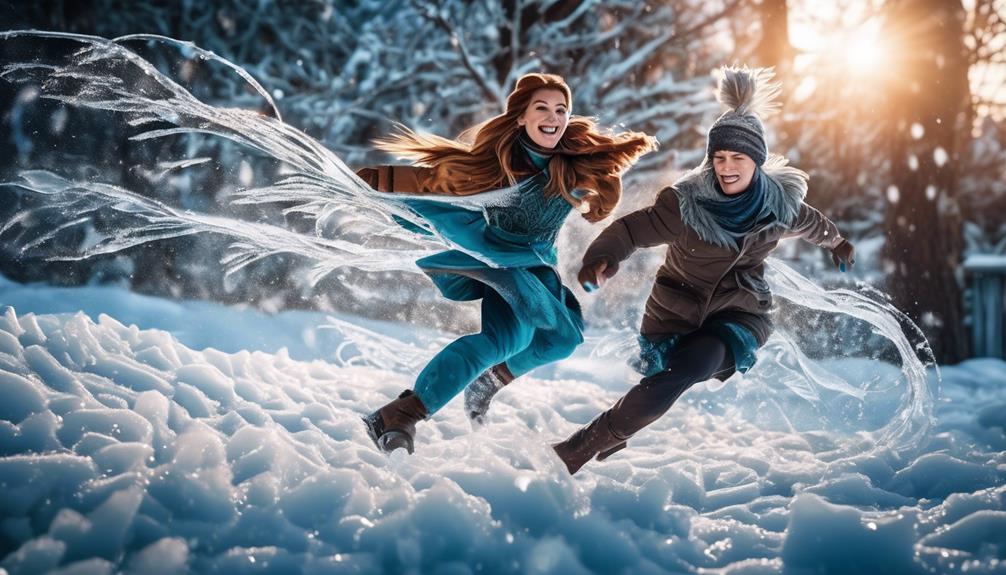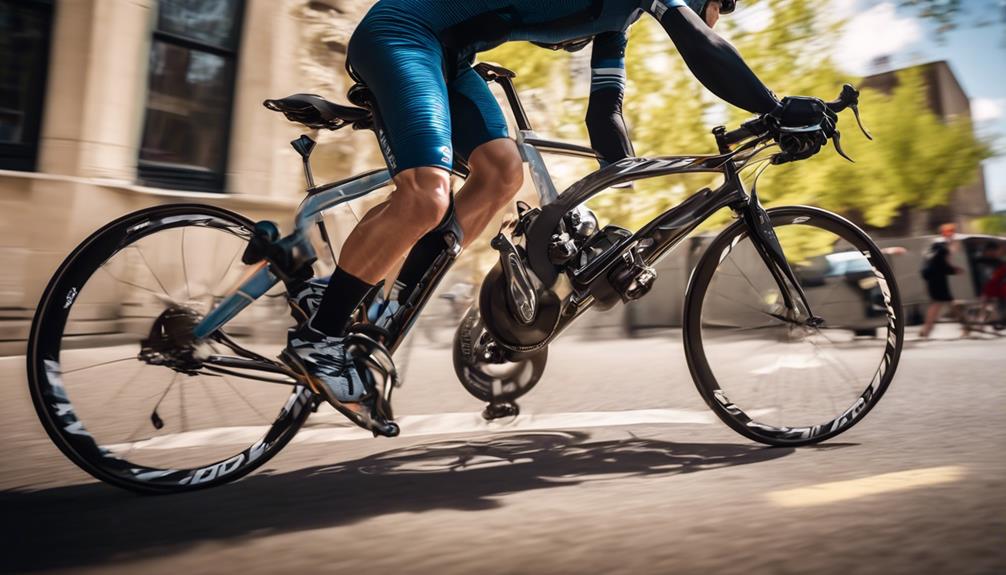Please note this post may contain affiliate links picked by me (Jay) that I have deemed may be of interest or relevant to you the reader of this.
These links do not affect the cost of the thing if you decide to purchase but i may get a little money if you choose to purchase.
For more information on my affiliate link policy click here.
Like a conductor guiding an orchestra, mastering shutter speed is the key to capturing perfect motion photography. With each click of the shutter, I am able to freeze a moment in time or create a mesmerizing blur of movement.
But where do I begin on this journey to shutter speed mastery? In this discussion, I will unravel the secrets behind slow shutter speeds for smooth motion, fast shutter speeds for freezing action, experimenting with long exposure times, using panning techniques for dynamic shots, and adjusting shutter speed for different subjects.
So, hold onto your cameras, because we're about to embark on an exhilarating exploration of shutter speed techniques that will take our photography to new heights.
Key Takeaways
- Shutter speed is crucial in capturing different aspects of sports events, from freezing the action to conveying motion and energy.
- Fast shutter speeds are essential for capturing the fast-paced action of sports events, while slower shutter speeds can add a sense of motion blur.
- Panning techniques combined with slower shutter speeds create a sense of motion in sports photography.
- Balancing sharpness and motion blur is important in conveying the desired mood and atmosphere in sports photography.
Slow Shutter Speeds for Smooth Motion
To capture the essence of smooth motion in your photographs, incorporating slow shutter speeds can be a game-changer. It allows you to create dreamy effects and capture the beauty of flowing water with long exposure. When you use a slow shutter speed, the camera's sensor is exposed to light for a longer period of time, resulting in a blurred effect on moving subjects. This technique can add a sense of motion and dynamism to your images, making them visually stunning.
One of the most popular uses of slow shutter speeds is capturing the beauty of flowing water. By using a long exposure, you can turn a fast-flowing river or a cascading waterfall into a silky, ethereal masterpiece. The water appears soft and smooth, almost like a painting. This effect gives your photos a dreamy and surreal quality that's sure to captivate viewers.
In addition to water, slow shutter speeds can be used to create other mesmerizing effects. For example, capturing the trails of car lights at night can result in stunning light streaks that illuminate the scene. Moving subjects, such as dancers or vehicles, can be transformed into graceful, ghost-like figures, adding a touch of magic to your images.
To make the most of slow shutter speeds, it's important to stabilize your camera. A tripod or any other stable surface will help eliminate any unwanted camera shake, ensuring sharpness in the stationary elements of your composition.
Incorporating slow shutter speeds into your photography repertoire opens up a whole new world of creative possibilities. Experiment with different settings and subjects, and let your imagination run wild. The results will be nothing short of extraordinary.
Fast Shutter Speeds for Freezing Action
Now that we've explored the beauty and creativity of slow shutter speeds, let's dive into the exciting world of fast shutter speeds for freezing action. When it comes to capturing motion blur with slower shutter speeds, we saw how it can add a sense of dynamism and fluidity to our images. However, there are times when we want to freeze fast-moving subjects, and that's where high shutter speeds come into play.
Imagine photographing a sprinter in action or a bird in flight. These moments are fleeting, and we need to act quickly to capture them with clarity and precision. By using fast shutter speeds, we can freeze the action and create stunning images that showcase the power and speed of our subjects.
When shooting with high shutter speeds, it's crucial to consider the lighting conditions. In situations where there's ample light, such as a bright sunny day, achieving fast shutter speeds is relatively easy. However, in low-light environments, you may need to increase your ISO or use artificial lighting to maintain a high shutter speed.
One of the advantages of using fast shutter speeds is the ability to freeze not only the subject but also any accompanying elements, such as water droplets, flying debris, or even the movement of a person's hair. These frozen moments add a sense of intensity and drama to the image, making it visually captivating.
Experimenting With Long Exposure Times
Experimenting with long exposure times opens up a world of creative possibilities for capturing mesmerizing images. By extending the duration of the exposure, we can create stunning effects that bring a sense of movement and dynamism to our photographs.
Here are three ways in which long exposures can evoke an emotional response in our audience:
- *Creative effects with light trails*: With a slow shutter speed, we can transform moving lights into beautiful trails of color. Whether it's car headlights streaking across a cityscape or fireworks bursting in the night sky, these light trails add a touch of magic to our images. They draw the viewer's eye and create a sense of energy and excitement.
- *Capturing the essence of movement through long exposures*: Long exposures allow us to convey the feeling of motion in our photographs. Whether it's capturing the graceful flow of a waterfall or the smooth blur of people moving through a crowded street, these images transport the viewer into the scene, making them feel as if they're experiencing the movement firsthand.
- *Creating dreamlike and ethereal landscapes*: By using long exposures, we can transform landscapes into ethereal and otherworldly scenes. A long exposure of a beach at sunset, for example, can turn crashing waves into a misty blur, giving the photograph a dreamlike quality. These images evoke a sense of tranquility and wonder, transporting the viewer to a different realm.
Experimenting with long exposure times allows us to push the boundaries of traditional photography and create images that are truly unique and innovative. It's a technique that opens up a whole new world of creativity and emotion, allowing us to capture the essence of movement and create images that leave a lasting impression.
Using Panning Techniques for Dynamic Shots
Using panning techniques in photography adds a dynamic and captivating element to your shots. It allows you to capture motion blur in a controlled manner, creating dynamic images that truly stand out.
Panning involves tracking a moving subject with your camera while using a slower shutter speed. This technique helps to keep the subject in focus while blurring the background, resulting in a sense of speed and motion.
To capture motion blur with panning techniques, start by selecting a slower shutter speed. This will allow the camera to capture the movement of the subject as you pan. It's important to keep your camera steady and follow the subject's movement smoothly. This will help you achieve a sharp subject while blurring the background.
Creating dynamic shots with controlled motion blur requires practice and patience. Experiment with different shutter speeds to find the perfect balance between freezing the subject and creating a sense of motion. Remember to maintain a steady hand and follow the subject's movement smoothly. This will ensure that your panning shots are sharp and visually appealing.
Panning techniques can be used in a variety of situations, from capturing fast-moving cars on a racetrack to photographing athletes in action. It adds a sense of excitement and energy to your images, making them more engaging and visually interesting.
Adjusting Shutter Speed for Different Subjects
To capture the best shots with varying subjects, it's essential to adjust the shutter speed accordingly. The right shutter speed can make all the difference in capturing the motion of different subjects in the most captivating way possible. Here are some key considerations and techniques for adjusting shutter speed for different subjects:
- Shutter speed considerations for capturing water movement:
- Slow shutter speeds (around 1/2 to 1/15 of a second) can create a smooth, dreamlike effect when photographing waterfalls or ocean waves. This technique can give your images a surreal and ethereal quality, evoking a sense of tranquility and serenity.
- Faster shutter speeds (around 1/250 to 1/1000 of a second) can freeze the motion of water droplets or crashing waves, capturing the power and energy of the moment. This technique can create dynamic images that convey a sense of action and excitement.
- Shutter speed techniques for photographing sports events:
- Fast shutter speeds (around 1/1000 of a second or higher) are essential for capturing the fast-paced action of sports events. This technique allows you to freeze the motion of athletes mid-action, resulting in sharp and detailed images that showcase their strength and agility.
- Using a slower shutter speed (around 1/250 to 1/500 of a second) can add a sense of motion blur to your sports photographs. This technique can convey a feeling of speed and intensity, giving your images a dynamic and energetic vibe.
Frequently Asked Questions
Can I Achieve Smooth Motion in My Photographs Without Using Slow Shutter Speeds?
Sure, achieving smooth motion in photographs without using slow shutter speeds is possible.
There are alternative techniques that can help create creative blur effects. By experimenting with panning, zooming, or using motion blur filters, you can add a sense of movement to your images.
These techniques allow you to capture dynamic and captivating shots while maintaining a faster shutter speed.
How Can I Ensure That My Fast Shutter Speed Settings Still Capture the Desired Amount of Action?
When it comes to capturing fast moving subjects, getting the right amount of action in your photographs can be a challenge. But fear not! There are techniques to ensure that your fast shutter speed settings still freeze the action just the way you want it.
One tip is to increase your ISO in low light conditions to maintain a faster shutter speed.
Another is to use burst mode to capture multiple frames in quick succession.
With these tricks up your sleeve, you'll be capturing perfect motion photography in no time!
What Are Some Potential Risks or Challenges Involved in Experimenting With Long Exposure Times?
Experimenting with long exposure times can pose some risks and challenges.
One challenge is capturing smooth motion without excessive motion blur. Adjusting camera settings and using panning techniques can help overcome this challenge.
Another risk is freezing action, as long exposures can result in less defined subjects. However, with practice and experimentation, one can achieve stunning results by finding the right balance between long exposure times and capturing the desired amount of action.
Are There Any Specific Techniques or Tips for Capturing Dynamic Shots Using Panning Techniques?
When it comes to capturing dynamic shots, panning techniques can be a game-changer. By following the moving subject with your camera and using a slower shutter speed, you can create a sense of motion and capture stunning images with creative motion blur.
It takes practice and patience, but the results are worth it. Experiment with different shutter speeds and try to keep the subject in focus while blurring the background.
Get ready to unleash your creativity and capture some truly innovative shots!
Besides Shutter Speed, What Other Camera Settings Should I Consider Adjusting When Photographing Different Subjects?
When capturing different subjects, it's important to consider adjusting more than just shutter speed. Understanding aperture and its effect on depth of field is crucial for achieving the perfect shot.
Additionally, the impact of ISO settings on image quality in different lighting conditions shouldn't be overlooked.
Conclusion
In the world of photography, mastering shutter speed is like conducting an orchestra. It's the key to capturing the perfect moment, whether it's freezing the action or creating a dreamy blur.
Just like a skilled conductor brings harmony to a symphony, understanding shutter speed brings harmony to your images. So next time you're out with your camera, remember that you hold the baton.
With the right shutter speed, you can create a visual masterpiece that will leave your audience in awe.


